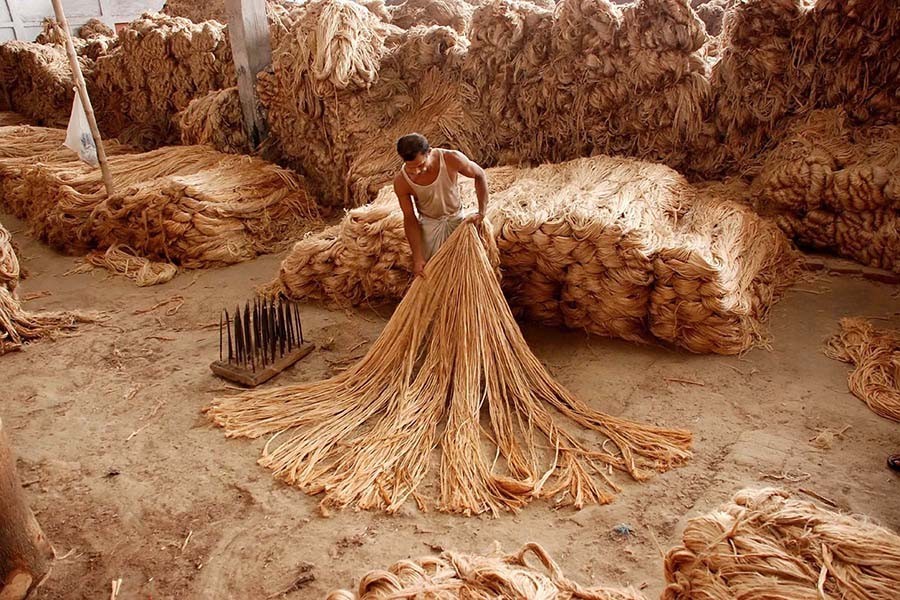The prices of raw jute have seen an increase of 30 per cent in this harvesting season, compared to the previous year, amid crop losses caused by unfavourable climatic condition in many districts.
On the other hand, jute mills are affected by the supply crunch of quality raw jute.
According to the Department of Agriculture Extension (DAE) data, jute acreage has rather increased by 10 per cent to 0.79 million hectares this year.
But untimely rain and river erosions during May-July period have damaged a sizeable amount of crops in Faridpur, Gopalganj, Shariatpur, Madaripur and Rajbari districts, farmers and jute millers said.
Data from Barisal office of DAE showed that 0.21 million hectares of land were brought under jute farming in the five districts under Faridpur region.
The office, however, is yet to estimate the crop losses in the region.
Although Pabna, Jessore, Magura and Manikganj districts saw good yields, prices remain high there.
Newly retted jute of tossa variety has been selling at Tk 1800-Tk 2300 and desi variety at Tk 1650-Tk 1800 a maund (40 kg) across the country for the last three weeks, according to the Department of Agricultural Marketing (DAM).
The current market price is about 30 per cent higher than a year ago, DAM assistant director TM Rashed Khan said.
Farmers are making some profits by selling jute and jute sticks this year, he added.
Faridpur Correspondent of the FE adds: Tossa variety of jute has been trading at Tk 1900-Tk 2300 a maund for the last two weeks in Bhanga, Nagarkanda, Moksudpur, Pangsha and Kalindi wholesale markets in the region.
Over 30 per cent of crops were damaged due to untimely rain in the region this year.
Besides, use of low quality seeds and lack of retting space led to the decline of yields to just 7.0 maunds per bigha (52 decimals) from 10-12 maunds.
Bangladesh Jute Spinners Association (BJSA) secretary Shahidul Karim told the FE that millers are now facing a tough competition while trying to get quality jute for their more than 105 factories.
The sector is now suffering double trouble -- rising jute prices in the local market and declining prices of jute products in the global market, he said.
Crop losses due to untimely rain in Faridpur region have caused severe supply crunch of quality tossa variety, he added.
Asked about the government-imposed ban on raw jute export, he said the ban failed to control the price situation as production costs have increased significantly in the last few years.
The government imposed the ban on raw jute export last year to help local mills get adequate amount of jute easily.
Meanwhile, the state-run Bangladesh Jute Mills Corporation (BJMC) has set a target to purchase 1.95 million quintals of raw jute this season through its 94 purchase centres, BJMC general manager (Jute) Mahiuddin Sadeqe told the FE.
The purchase started in the first week of July and the Corporation could buy only 12 per cent of their target so far, he added.
The country produced 1.44 million tonnes (8.0 million bales) of jute in the last fiscal year (FY '18).
This fiscal year's production target was fixed at 1.51 million tonnes (8.4 million bales), but it would be difficult to achieve it, insiders said.


